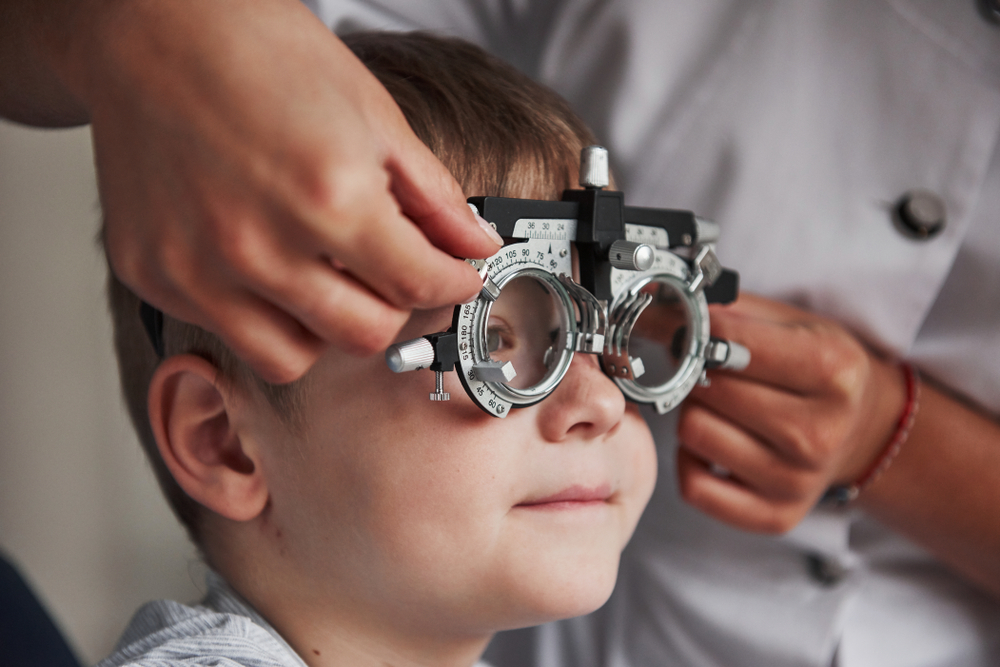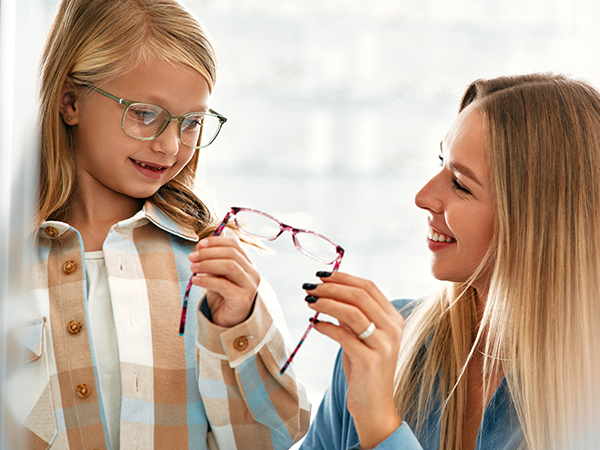
Your child’s first eye exam is a crucial step in ensuring healthy vision and supporting their development. Good vision is closely tied to learning success, as children rely heavily on their sight for reading, writing, playing, and interacting with the world around them. If your child is struggling to see clearly, it can affect their academic performance, social confidence, and overall quality of life.
The Link Between Vision and Learning
Children absorb most of their early learning visually. From recognizing shapes and letters to reading from a whiteboard or a book, clear vision plays a central role in classroom success. In fact, studies show that around 80% of what a child learns is through visual input. If a vision problem goes undetected, it may be mistaken for behavioral issues, attention problems, or learning disabilities.
Why Your Child Might Have Blurry Vision
Blurry vision in children is often caused by refractive errors, which prevent light from focusing correctly on the retina. The most common types include:
Myopia (nearsightedness): Distant objects appear blurry while close-up objects are clear. This is the most common refractive error in school-age children and is increasingly prevalent.
Hyperopia (farsightedness): Nearby objects may appear blurry, and children may strain their eyes when reading or doing homework.
Astigmatism: This causes distorted or blurred vision at any distance due to an irregularly shaped cornea.
The good news is that these conditions can often be corrected with glasses or other vision solutions if caught early.
The Importance of Regular Pediatric Eye Exams
Vision screenings at school or at a pediatrician’s office are helpful but are not a substitute for a comprehensive eye exam with an optometrist. Many eye conditions may not show symptoms in the early stages, and a full exam is essential for identifying issues like amblyopia (lazy eye), strabismus (eye turn), or early signs of myopia. Early detection means early intervention, which can prevent long term vision problems and support your child’s development during critical growth years.
What to Expect During the Eye Exam
At EyeScript Vision Care, we make pediatric eye exams comfortable and stress-free for both children and parents. Here's what typically happens during your child’s first visit:
Medical and Vision History: We'll ask about any concerns, family history of eye conditions, and your child’s overall health.
Visual Acuity Testing: This involves reading letters or identifying shapes from a chart to evaluate how well your child sees at various distances.
Eye Movement & Alignment Tests: We’ll check how well your child’s eyes move and work together to spot any issues with coordination or muscle control.
Refraction Test: Using special lenses, we determine if your child needs glasses and what prescription is appropriate.
Eye Health Evaluation: Using lights and gentle magnifying tools, we examine the internal and external health of the eyes.
Our team works at your child’s pace and takes care to explain each step so they feel at ease throughout the process. We also offer child-friendly eyewear options and myopia management treatments tailored to their specific needs.
Protect Your Child’s Vision with Trusted Eye Care in Spring, Texas
Setting the foundation for a lifetime of healthy vision begins with that first eye exam. By identifying and addressing vision problems early, you can help your child perform better in school, stay engaged in activities, and feel more confident. We’re proud to support families in Spring, Texas and the surrounding areas with compassionate, comprehensive eye care
Schedule your child’s first pediatric eye exam with EyeScript Vision Care and take the first step toward lifelong eye health. Visit our office in Spring, Texas, or call (346) 460-4900 to book an appointment today.





